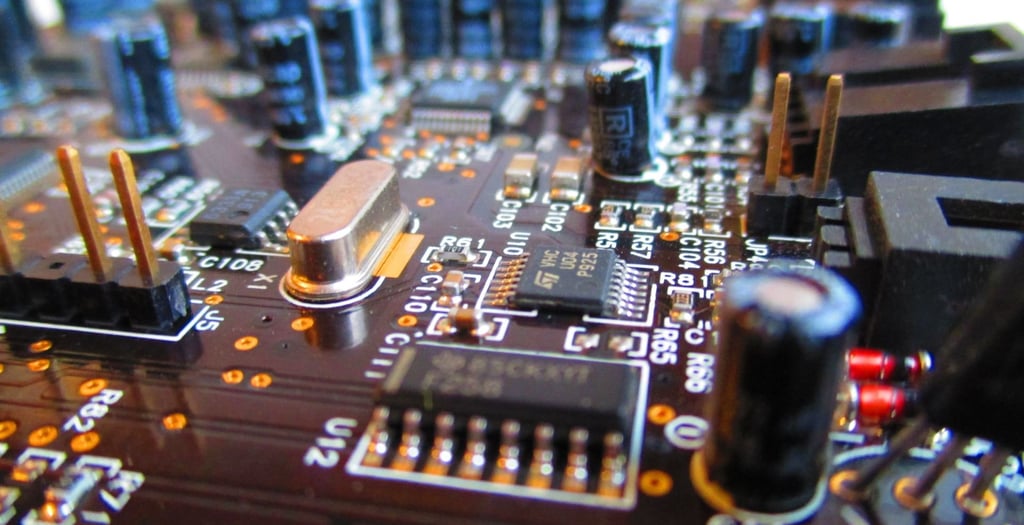From Tires to Transistors: The Unseen Power of rCB in Electronics
THE STORIES
TYROIL
7/15/20253 min read


In our increasingly digital world, the demand for advanced electronics is insatiable. From the smartphones in our pockets to the vast data centers powering the internet, every device relies on intricate components, many of which are made from virgin materials with significant environmental footprints. But what if the very tires we discard could become a hidden power source for this technological revolution? This is the surprising story of recovered carbon black (rCB) and its unseen potential in the world of electronics, transforming waste into the building blocks of our sustainable digital future.
Recovered carbon black, a product of tire pyrolysis, is primarily known for its role in new tire manufacturing and as a pigment. However, its unique physical and chemical properties, particularly its high electrical conductivity and porous structure, make it an intriguing candidate for advanced electronic applications. It's a journey from the gritty reality of discarded rubber to the microscopic precision of transistors and energy storage devices [1].
Powering the Future: rCB in Energy Storage
One of the most exciting frontiers for rCB is in energy storage. The world is rapidly transitioning towards renewable energy sources, but the intermittency of solar and wind power necessitates efficient storage solutions. Traditional batteries and supercapacitors often rely on expensive or environmentally problematic materials. rCB offers a sustainable alternative, particularly when converted into activated carbons.
Activated carbons derived from rCB possess an incredibly high surface area and a porous structure, making them ideal for storing electrical charge. Imagine supercapacitors that can charge and discharge almost instantaneously, powering electric vehicles or stabilizing grid fluctuations, all thanks to material derived from old tires. Research is actively exploring how to optimize the activation process of rCB to enhance its performance in these devices, paving the way for more sustainable and cost-effective energy storage solutions [2].
Beyond Batteries: Conductive Inks and Sensors
The electrical conductivity of rCB also opens doors to applications beyond energy storage. Consider conductive inks and coatings. These materials are crucial for printing flexible electronics, smart packaging, and wearable devices. By incorporating rCB, manufacturers can reduce their reliance on more expensive and less sustainable conductive materials like silver or copper, while still achieving the desired electrical properties. This not only lowers costs but also contributes to a more circular economy in the electronics sector.
Furthermore, rCB's unique properties are being investigated for use in sensors. Its ability to interact with various chemical compounds and its electrical responsiveness make it suitable for developing highly sensitive and selective sensors for environmental monitoring, medical diagnostics, or industrial process control. Imagine a sensor that can detect pollutants in the air, or glucose levels in the blood, with its core component coming from recycled tires. This is the unseen power of rCB at work, contributing to a healthier and smarter world.
The Microscopic Revolution: Impact on Sustainable Technology
The integration of rCB into electronics represents a microscopic revolution with macroscopic impact. It signifies a paradigm shift in how we source materials for our technological advancements. By embracing rCB, the electronics industry can significantly reduce its environmental footprint, minimize waste, and contribute to a truly circular economy. It's about designing products not just for their functionality, but for their entire lifecycle, from raw material to end-of-life and back again.
This journey from tires to transistors is a testament to human ingenuity and the boundless potential of waste. It challenges our perceptions of what is valuable and what is disposable, revealing that even the most mundane discarded items can hold the key to our sustainable technological future. The next time you use an electronic device, consider the unseen power of rCB, quietly working to make our world a little greener, one circuit at a time.
More Related Articles:
Green Jobs and Economic Empowerment: The Social Impact of the TPO and rCB Industry
The Quality Quest: Ensuring rCB Meets High Standards for Industry
The Silent Revolution: How rCB is Transforming Everyday Products (Beyond Tires)
The Unsung Heroes: Unveiling the Power of Pyrolysis By-products
References:
[1] Weibold Academy. (2024). rCB as a sustainable substitute for graphite and graphene. Retrieved from https://weibold.com/weibold-academy-rcb-as-a-sustainable-substitute-for-graphite-and-graphene
[2] ACS Omega. (2024). Insights into Activation Pathways of Recovered Carbon Black (rCB) from End-of-Life Tires (ELTs) by Potassium-Containing Agents. Retrieved from https://pubs.acs.org/doi/10.1021/acsomega.3c09930
